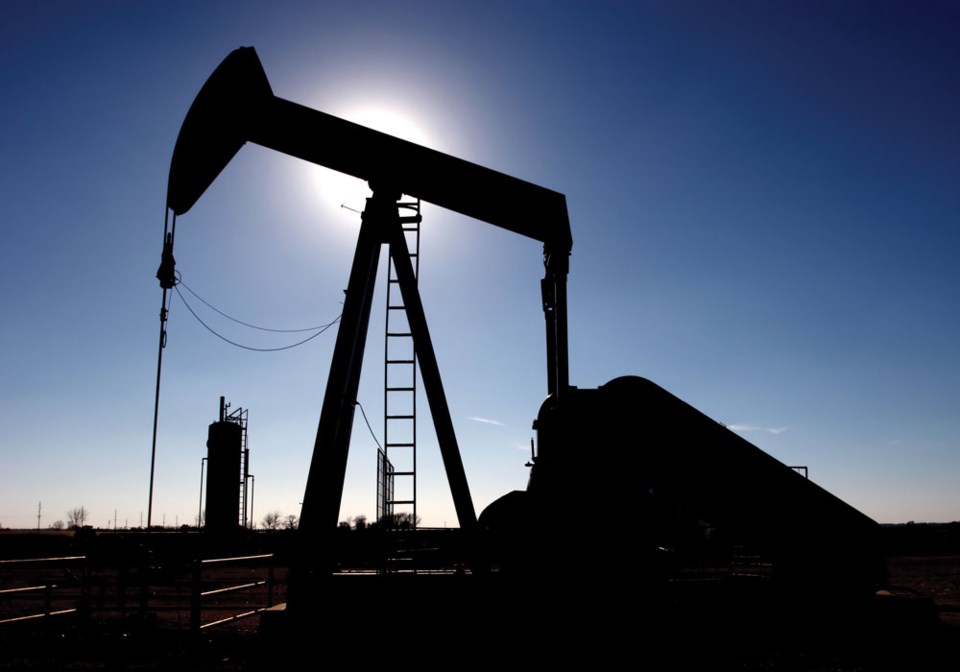As the price per barrel of oil lingers in the ballpark of $50, the oil and gas industry continues to chug on in the Estevan area, making the most of what is available. Although the activity in the oil patch has not come close to returning to the levels it was at before the dramatic 2014 slide in the price for a barrel of oil, some in the industry are seeing an incremental increase in activity.
Tom Copeland, vice-president and COO of Fire Sky Energy, said that he has seen an uptick in oil and gas activity in the Estevan area, but is reluctant to attribute the increase to only the price per barrel of oil.
“Some of it is related to the Crown permit expiry window, on March 30. It’s often busy at this time of year, with companies trying to keep up with expiries,” said Copeland. “We have 40 drilling rigs in the area. That’s, historically, a pretty good number. Not as high as the 90 or 100 rigs a couple of years back, but if you look into the history, if you were running 35 to 40 rigs in the mid-2000s was a good number.”
One of the biggest challenges Copeland finds in the industry these days, is getting critical services, such as fracking crews. He noted that finding contractors to provide those services can be more difficult, now that there are fewer contractors at work in the oil patch.
“We’ve had trouble getting fracking services. Sometimes, you end up waiting. It’s not nearly as bad as it was two or three years go, but certainly, it’s challenging at times,” he said. “Contractors are trying to net as much work as they can, and work efficiently. Frack crews are harder to get right now. A lot of that equipment is up in northern Alberta right now, where it’s getting busy.”
Al Biette, a manger with Future Energy Services Ltd. is not convinced there is any light at the end of the tunnel for the industry yet, and said he has not seen any evidence of an increase of activity in the oil and gas sector.
“I think the recovery of oil is still a year away. We need to see (a price per barrel) in the low 60s for a consistent time, before there’s any increase in activity,” said Biette.
Copeland’s thoughts on the matter echoed Biette’s position. Copeland noted an ideal price per barrel he’d like to see, to ensure growth in the industry would be around $70 a barrel.
Biette said, “That’s not beginning right now. It’s still a ways away. Everyone has a bit of money they’re using up in the last quarter, to try and see a bit of activity because of that, but oil prices aren’t any stronger now than they were two months ago.”
Jeff Richards, vice-president of strategic development at Southeast College, said there has been a decline in enrolment in courses and classes associated with the oil and gas industry, since the decline in the level of activity in the oil patch.
“It’s hard to make a commentary, because so much evidence is anecdotal. But one of the things we’ve seen at the college over the last couple of years is that when oil started to decline, there was still a lot of activity happening,” said Richards. “There’s a bit of an elasticity to that kind of market, and sometimes at places like the college, we see a decline. That decline might be slower than in other industries that are attached to the energy sector.”
Richards said college is always doing energy training, even when the price per barrel of oil is down near lows of $30 and $40, adding, “There are folks who are always going to work in the oilfield. We’re always training them. That can be anything from CPR and first aid, to a couple of electrical programs.”
A trend Richards has noticed is that the decline in oil and gas sector activity has resulted in a coinciding increase in the amount of enrolment in other programs, such as mechanical or electrical. Richards said an additional trend is the return of many who have been affected by the decline in oil and gas, to the college, to increase their education, taking more courses to be able to weather the volatility in the market, with more skills that can lead to better employment prospects.
Looking forward, Copeland said it’s difficult at this point, to say what trends will emerge in the industry. With both oil being around $50 per barrel and the impending Crown expiry window when permits run out as factors at play, Copeland said, “We’ll see what happens, come summertime. If it’s still busy, we’ll know that our oil patch is back, for lack of a better term.”




